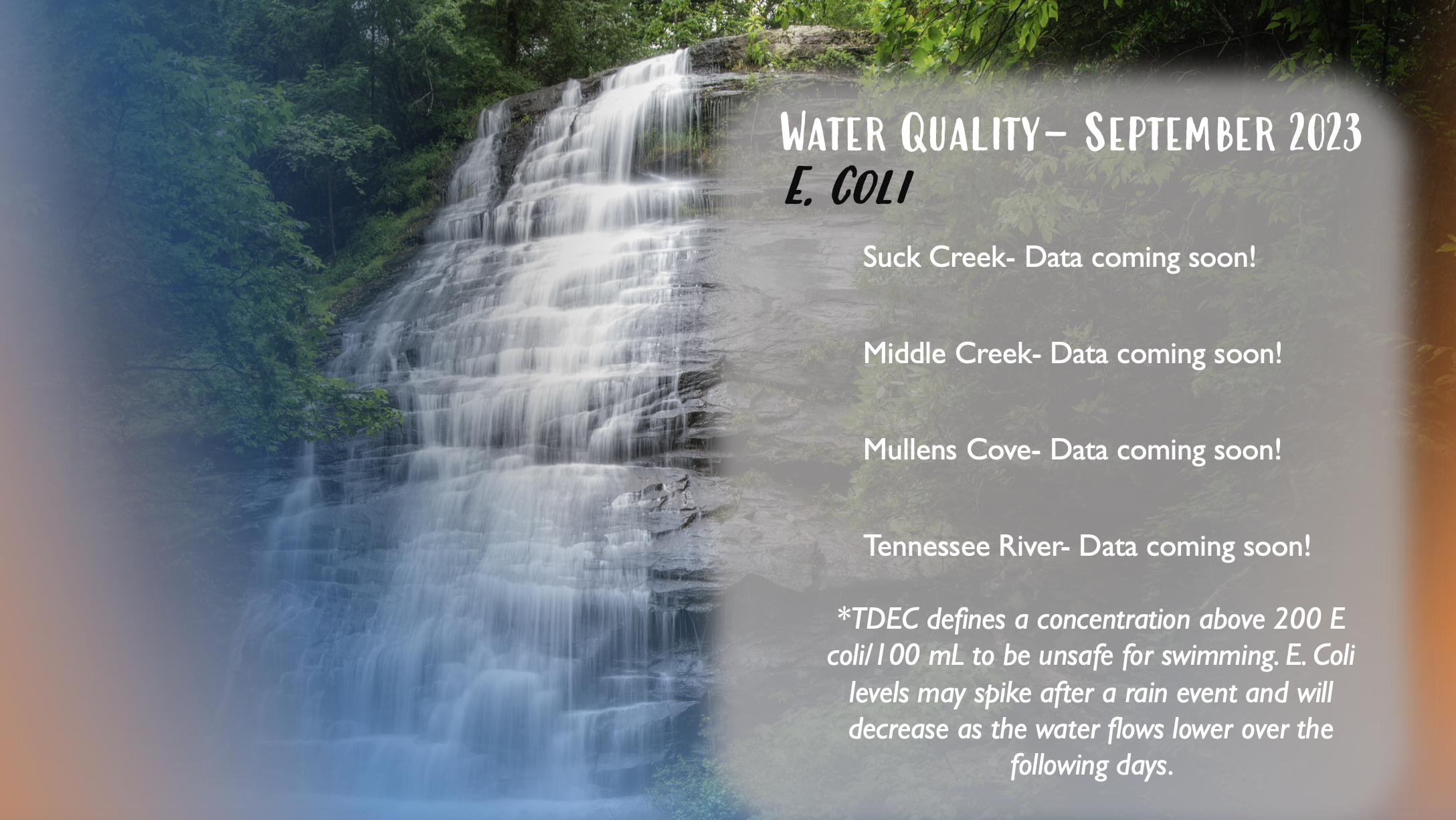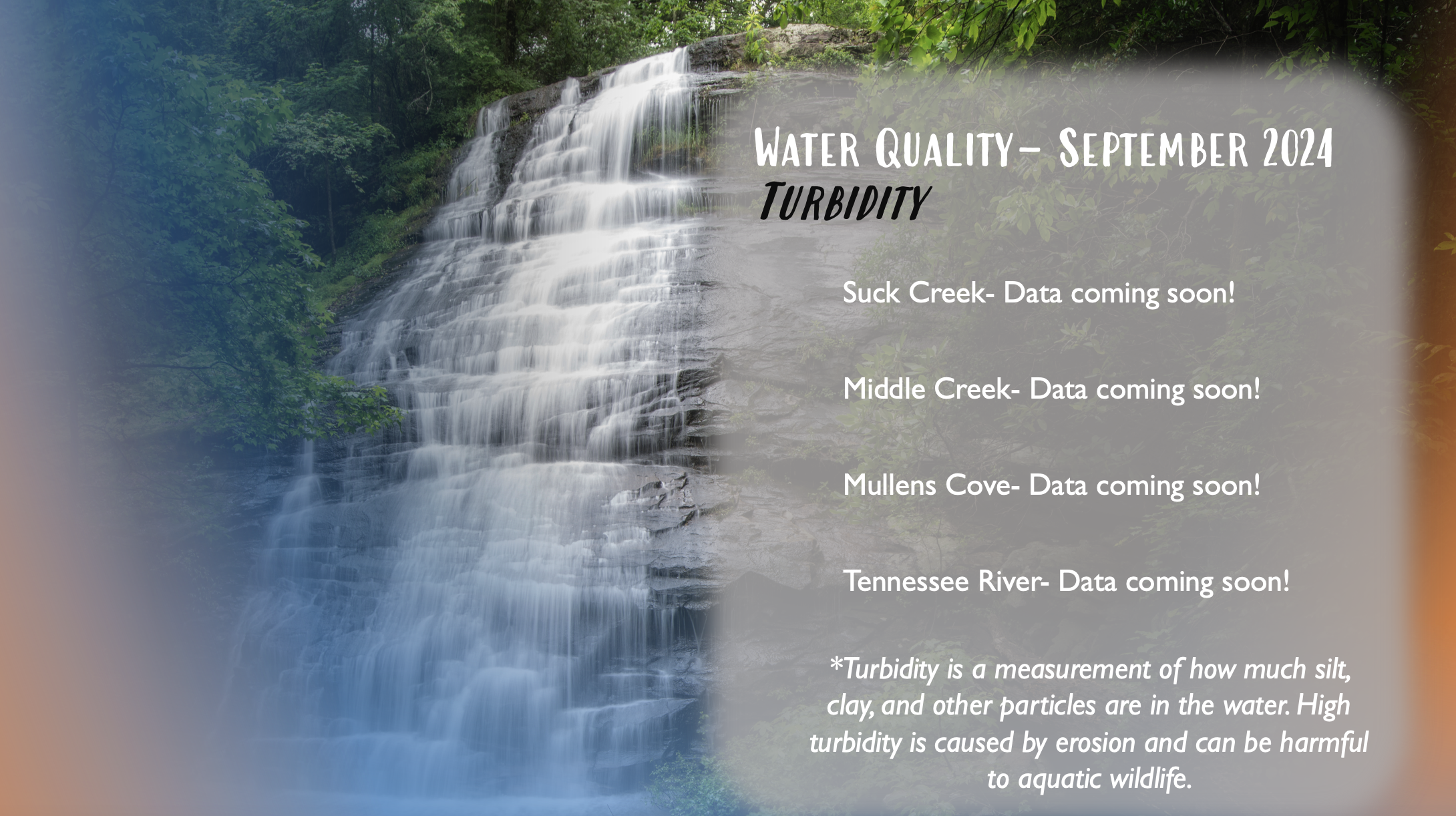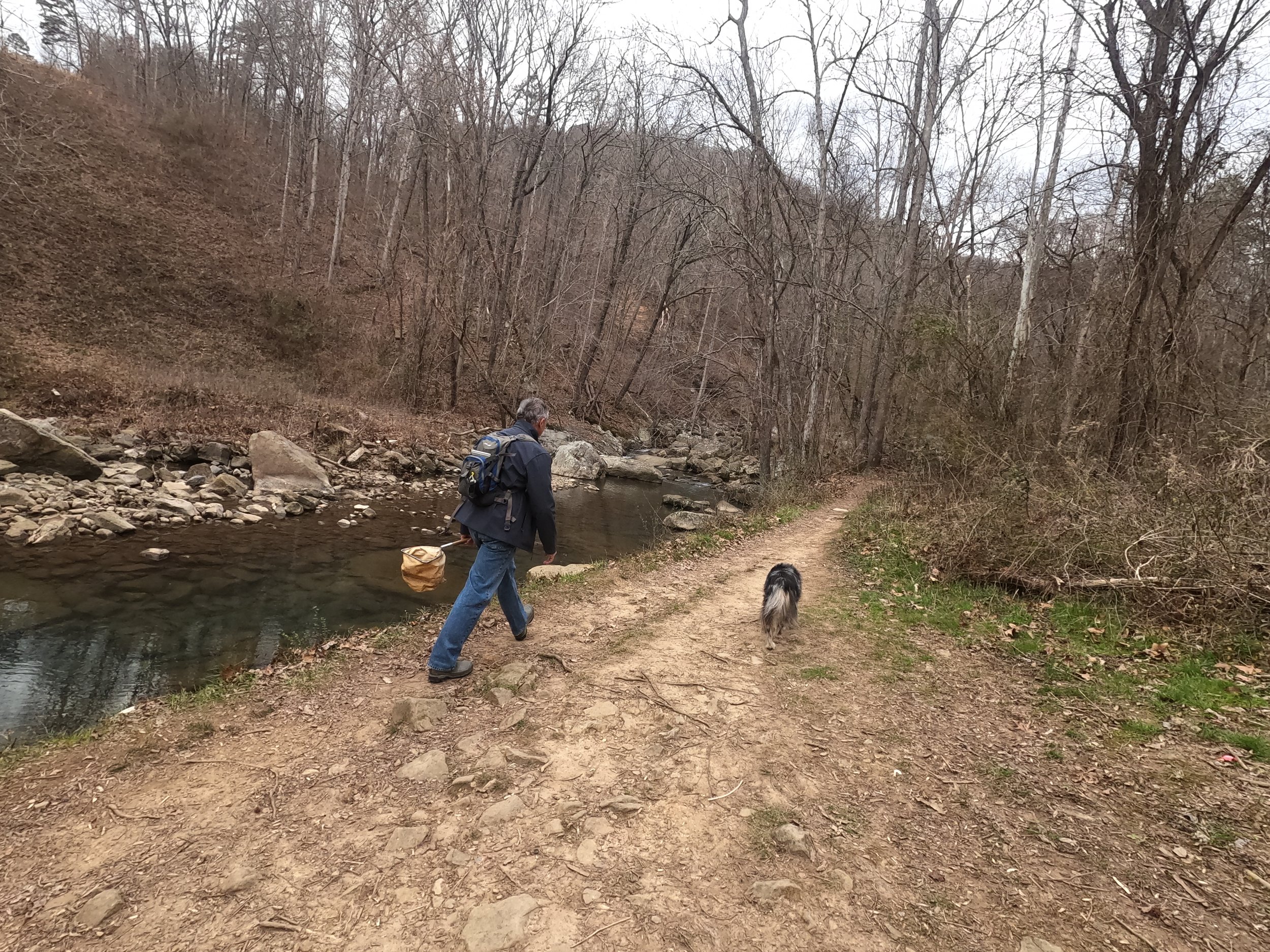Water Quality Monitoring
The Tennessee River Gorge Trust established a water quality program in late 2015 to monitor perennial streams in the Gorge. Our water quality monitors and data are certified through a partnership with the Tennessee Aquarium’s Conservation Institute and GA Adopt-A-Stream. The goal of this program is to assess stream health of the tributaries flowing into the Tennessee River and identify any needs for land management action of stream restoration.
Collected data is submitted to Georgia-Adopt-A-Stream and can be viewed here.
Water Quality Reports



Our Parameters- What are we testing for?
Temperature affects the feeding, respiratory, and metabolic activity of aquatic organisms. Stream temperature is often altered by anthropogenic influences such as increased temperatures from road and roof runoff, which can subsequently alter species composition in our waters. Temperature also controls the solubility of oxygen into water. High temperatures correlate to lower dissolved oxygen concentrations, making it harder for species with gills to breathe.
Dissolved oxygen (D.O.) is measured as percent saturation and concentration (mg/L). Aquatic organisms require certain concentrations of D.O. in the water just like we require a certain concentration in the air. Dissolved oxygen is naturally limited by temperature, photosynthesis, and microbial decomposition; however, pollution also limits D.O. directly or indirectly, by altering temperature and primary production.
Turbidity is a measurement of how much silt, clay, and other particles are in the water. High turbidity levels are caused by sedimentation from erosion and can have devastating effects of aquatic organisms.
Escherichia coli (E.coli) is a coliform bacteria specific to humans and other warm-blooded animal fecal waste. Thus, it is commonly used to detect pathogenic (disease-causing) conditions in a waterway. Our sampling results are compared to the U.S. Environmental Protection Agency’s E. coli standards for recreational use. This way, we can determine if fecal pollution is a problem in the Tennessee River Gorge.
Too low or high pH is detrimental to aquatic organisms. Most require a pH range of 6.8 – 8.2. Deviation from this range alters the solubility of important nutrients as well as toxic heavy metals, which can threaten the reproductive success of aquatic organisms. Human-induced pollution is a common cause of changes in stream pH such as hypereutrophication, acid mine drainage, and illegal dumping.
Aquatic macroinvertebrates, such as insects and crayfish, are indicators of stream quality because they are affected by the physical, chemical, biological, and morphological conditions of a steam. Understanding our watershed’s macroinvertebrate population will provide valuable information that will help us make land management decisions and track environmental quality over time. We collect macroinvertebrate samples every 3 months. Trained staff and volunteers identify macroinvertebrates in the field and then release the organisms back into the stream.
Rob Richie, Lead Volunteer
Rob Richie is a native Tennessean with historical family ties to the Tennessee River Gorge. He is an active volunteer in the TRGT Water Quality Program and also is coordinating field surveys for our reptiles and amphibians. Rob spent his youth and spare time as an adult searching for and studying herps in the Southern Appalachians and Cumberland Plateau. He also volunteers with the Orianne Society out of Georgia, is a member of the Southeast Partners in Reptile and Amphibian Conservation, and has been certified in the Tennessee Naturalist Program.
Rob earned a Biology Degree from UTC and subsequently began working for TVA in the Nuclear Power Group, retiring in 2015. He currently lives in Chattanooga with his wife of 37 years, Mary Jo, and has two daughters; one of whom lives in Chattanooga and the other in Columbus, Ohio.















The Tennessee River Gorge Trust has recently established a water quality program to monitor perennial streams in the Gorge. TRGT will use this information to understand how we impact our water supply and the important role we play in water conservation.